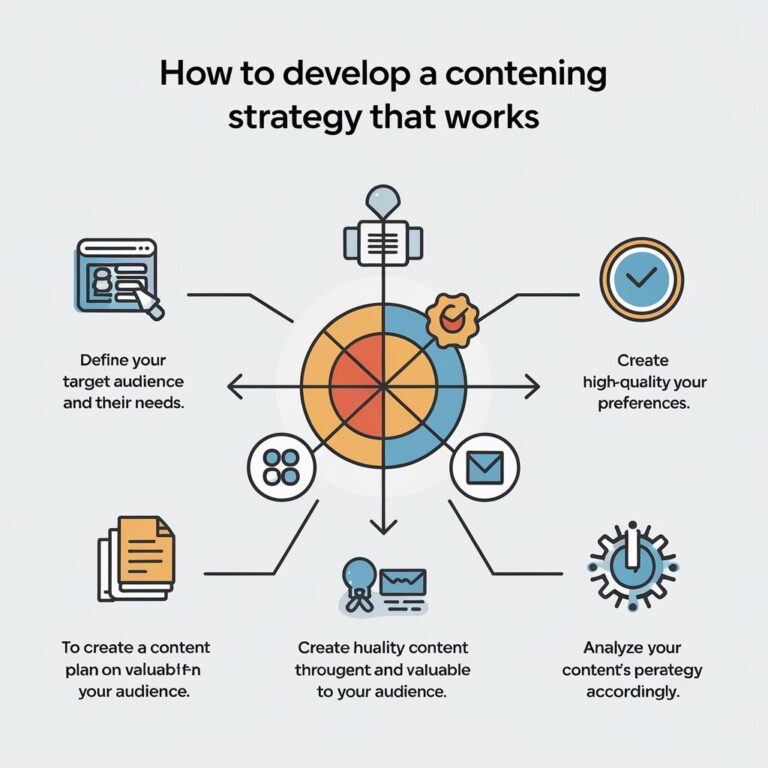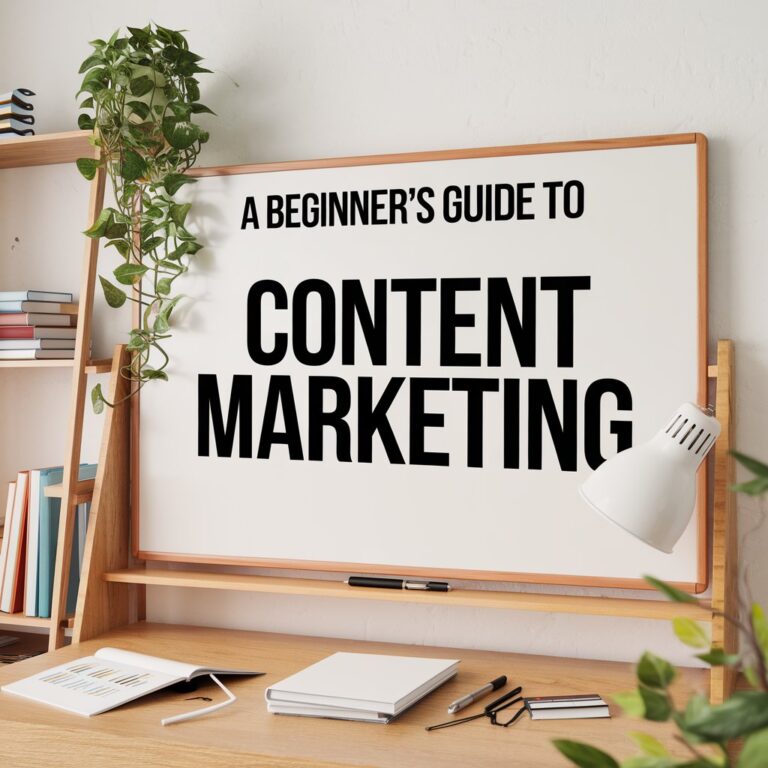Content marketing is increasingly becoming an essential strategy for businesses. As this trend continues, it’s crucial for companies to implement more strategic approaches. This will help them capture attention, engage customers, and boost traffic. Content marketing focuses on creating and sharing valuable, relevant content that builds trust and authority over time.
Whether you’re just starting out or looking to improve your current strategy, this guide will equip you with everything you need to succeed in content marketing. We’ll cover the essentials, including the steps to develop a content marketing strategy, the types of content you can create, and how to distribute and measure success.
By the end of this guide, you’ll be prepared to build a content marketing strategy that positions your business as a thought leader, drives traffic, and fosters customer relationships.
What is Content Marketing?
Content marketing is the creation and distribution of valuable, relevant, and consistent content designed to attract and retain a clearly defined audience. The ultimate goal is to drive profitable customer actions—whether it’s making a purchase, signing up for a newsletter, or engaging with your brand.
Unlike traditional advertising, which often pushes products or services, content marketing focuses on delivering value. It aims to educate, entertain, or solve problems for your audience. This approach builds trust and establishes your brand as a reliable resource in your industry.
Why Content Marketing Matters
Content marketing is an essential component of any digital marketing strategy. Here’s why:
– Builds Brand Authority: Consistently producing high-quality content positions your brand as an expert in your industry, earning trust from customers.
– Drives Organic Traffic: Well-optimized content can increase your visibility on search engines, leading to higher organic traffic.
– Boosts Engagement: Relevant and engaging content keeps your audience connected to your brand, increasing time spent on your website and social channels.
– Supports Lead Generation: Strategic content marketing helps nurture potential customers and move them down the sales funnel, eventually converting them into paying customers.
– Increases Customer Loyalty: By regularly providing valuable content, you foster deeper relationships with your audience, increasing their loyalty to your brand.
These steps will guide you toward developing a successful content marketing strategy for your business.
1. Developing a Content Marketing Strategy
A strong content marketing strategy sets the foundation for success. A well-thought-out plan will guide your efforts and help you achieve your goals more efficiently. Here are the key steps to developing a successful content marketing strategy:
1.1. Identify Your Target Audience
Before creating content, you need to know who you’re creating it for. Develop detailed buyer personas to represent your ideal customers. These personas should include information such as demographics, interests, pain points, and content preferences. Knowing your audience helps you tailor your content to address their specific needs and challenges.
1.2. Define Clear Goals
What do you want to achieve with your content marketing efforts? Common goals include:
– Increasing brand awareness
– Driving traffic to your website
– Generating leads
– Boosting sales
– Building customer loyalty
Defining your goals will help you measure the success of your content marketing strategy and keep your efforts focused.
1.3. Conduct a Content Audit
If you already have content, perform a content audit to assess its performance. Identify which pieces are driving traffic and engagement, and where there are gaps. This analysis will help you understand what’s working and where improvements can be made.
1.4. Develop a Content Calendar
A content calendar is a crucial tool for organizing and scheduling your content. It helps ensure you’re consistently publishing valuable content while aligning it with your broader marketing campaigns. Your calendar should include:
– Blog post topics
– Video production schedules
– Social media posts
– Key dates for product launches or seasonal promotions
1.5. Plan Your Content Types
Different content formats serve different purposes. A comprehensive strategy involves using a mix of formats to engage your audience at various stages of their buyer’s journey. We’ll discuss these formats in more detail later.
2. Types of Content in Content Marketing
One of the strengths of content marketing is its versatility. Businesses can create a variety of content types to attract, inform, and engage their target audience. Some of the most effective formats include:
2.1. Blog Posts
Blogging is a foundational element of content marketing. Well-written blog posts answer your audience’s questions, offer solutions to their problems, and provide insights into industry trends. Blog posts are also an excellent way to boost SEO and drive traffic to your website.
2.2. Videos
Video content is one of the most engaging formats for audiences. It’s perfect for explaining complex topics, showcasing products, or telling your brand’s story. With the rise of platforms like YouTube and TikTok, videos offer an unparalleled opportunity to reach wider audiences.
2.3. Infographics
Infographics are a great way to present data and information in a visually appealing format. They are highly shareable and help simplify complex topics, making them ideal for boosting engagement on social media.
2.4. E-books and Whitepapers
These long-form content pieces allow you to dive deep into a topic, offering detailed insights and analysis. They’re often used as lead magnets to capture email addresses from potential customers in exchange for the content.
2.5. Podcasts
Podcasts are an increasingly popular format for content consumption. They provide a convenient way for audiences to engage with your content while commuting, exercising, or multitasking.
2.6. Case Studies
Case studies showcase real-world examples of how your product or service solved a problem for a customer. They provide social proof and help potential customers see the value in working with your business.
2.7. Webinars
Webinars allow you to engage directly with your audience in real time. They’re excellent for educating your audience, building authority, and generating leads.
3. The Role of SEO in Content Marketing
Search Engine Optimization (SEO) plays a crucial role in content marketing by ensuring your content is discoverable by search engines like Google. Implementing SEO best practices can help your content rank higher in search results, driving more traffic to your website.
3.1. Keyword Research
The foundation of SEO is identifying relevant keywords that your target audience is searching for. Use keyword research tools to find terms with high search volume and incorporate them naturally into your content.
3.2. On-Page SEO
On-page SEO involves optimizing individual web pages to improve their search engine rankings. Key on-page elements include:
– Title tags: The title of your page, which appears in search engine results.
– Meta descriptions: A brief summary of your page that also appears in search results.
– Headers: Use H1, H2, and H3 tags to structure your content for better readability.
– Alt text: Descriptions of images that help search engines understand your visual content.
3.3. Link Building
Internal and external links are important for SEO. Internal links connect different pages on your website, improving navigation and encouraging users to explore more of your content. External links, especially from reputable websites, boost your content’s credibility and authority.
4. Content Distribution: How to Maximize Your Reach
Creating great content is only half the battle. You also need a strategy to distribute it effectively and ensure it reaches your target audience. Here are some of the most effective content distribution channels:
4.1. Social Media
Social media platforms like Facebook, Twitter, LinkedIn, and Instagram are powerful tools for content distribution. By sharing your content on these platforms, you can increase its visibility and engagement.
4.2. Email Marketing
Email marketing allows you to deliver content directly to your audience’s inbox. Regular email newsletters with links to your latest blog posts, e-books, or case studies can drive traffic back to your website and keep your audience engaged.
4.3. Paid Advertising
If you want to amplify your reach, consider using paid ads on platforms like Google Ads or Facebook Ads. Paid ads allow you to target specific demographics and ensure your content gets in front of the right people.
4.4. Influencer Marketing
Partnering with influencers in your industry can help you reach a wider audience. Influencers can share your content with their followers, providing valuable social proof and increasing your brand’s credibility.
4.5. Guest Blogging
Guest blogging involves writing content for other websites or blogs in your industry. This strategy helps you tap into new audiences and build backlinks to improve your website’s SEO.
5. Measuring Success in Content Marketing
To determine whether your content marketing efforts are successful, you need to track the right Key Performance Indicators (KPIs). These metrics will help you evaluate the effectiveness of your content and identify areas for improvement.
5.1. Website Traffic
Monitor how much traffic your content is driving to your website. Use tools like Google Analytics to track the number of visitors, page views, and time spent on your site.
5.2. Engagement Rates
Track how your audience is engaging with your content. This includes likes, comments, shares, and other forms of interaction on social media or your website.
5.3. Lead Generation
Measure how many leads your content is generating. For example, track how many people sign up for your newsletter or download your e-book.
5.4. Conversion Rates
Track how many visitors from your content are converting into paying customers or taking other desired actions, such as filling out a form or booking a consultation.
5.5. Content Performance
Use analytics tools to track how individual pieces of content are performing. Identify which types of content are driving the most engagement and adjust your strategy accordingly.
6. Repurposing Content for Maximum Value
Content repurposing allows you to extend the life of your content and reach new audiences by adapting it into different formats. Here’s how you can repurpose content:
6.1. Turn Blog Posts into Infographics
Transform your high-performing blog posts into visually engaging infographics. This makes your content more shareable on social media and can attract a new audience.
6.2. Create a Podcast or Webinar
If you have long-form blog content or e-books, consider turning them into podcasts or webinars. This gives your audience a new way to consume your content while positioning you as an industry leader.
6.3. Compile Posts into an E-book
If you’ve written several blog posts on a particular topic, combine them into an e-book. This can serve as a valuable lead magnet to capture email subscribers.
6.4. Share Content on Multiple Platforms
Repurpose social media posts into blog content or turn long-form blog posts into shorter LinkedIn articles. Diversifying your content distribution ensures it reaches different segments of your audience.
FAQs on Content Marketing
1. How long does it take to see results from content marketing?
Content marketing is a long-term strategy. Depending on your industry, audience, and consistency, you can start seeing noticeable results within 6-9 months. However, some improvements, like increased website traffic, might happen sooner.
2. What type of content should I create for my business?
The type of content you create should be aligned with your audience’s preferences and your marketing goals. Blog posts, videos, infographics, case studies, and e-books are all effective formats depending on the stage of the buyer’s journey.
3. How often should I publish new content?
There’s no one-size-fits-all answer, but consistency is key. Many businesses find success by publishing new blog posts or content weekly, but some opt for bi-weekly or monthly schedules based on their resources and goals.
4. What is the role of SEO in content marketing?
SEO ensures that your content is discoverable on search engines like Google. By optimizing your content with relevant keywords, meta descriptions, headers, and links, you can increase your chances of ranking higher in search results and driving organic traffic.
5. Can small businesses benefit from content marketing?
Absolutely! Content marketing is cost-effective and can deliver significant returns for small businesses. By creating valuable content tailored to your target audience, small businesses can compete with larger competitors and establish authority in their niche.
Conclusion
Content marketing is an essential tool for building brand authority, driving traffic, and engaging your audience. By implementing a strategic approach, you can create content that resonates with your target market and delivers real business results. Whether you’re just getting started or looking to refine your strategy, a well-executed content marketing plan can set your business apart from the competition.
If you’re ready to take your content marketing to the next level, Optimum360 Agency is here to help. Our expert team can guide you through every step, from strategy development to content creation and distribution. Contact us today to discover how we can help your business grow through impactful content marketing. Reach out to us at [email protected] or call +234 911 923 1035 to get started!


